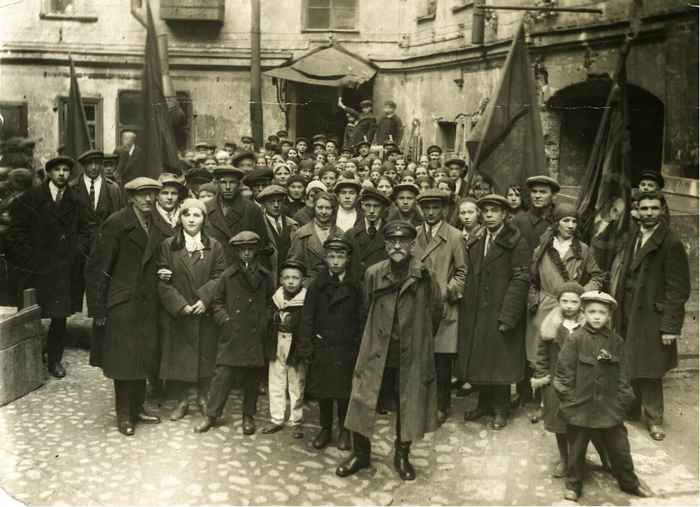Revolutionizing the City: Urban Reality in the Wake of October 1917
- Start date
- 25 January 2023
- End date
- 26 January 2023
- Time
- 10:00
- Location
- Roeterseilandcampus - building J/K
- Room
- Room: JK1.05

About the program
The October 1917 Revolution and the disintegration of the Russian Imperial space following World War I had a significant impact on the ways in which urban space all around the world was conceptualized and experienced by its inhabitancy, professionals, writers, artists, and policy makers. The establishment of a communist regime over the core territories of the Tsarist Empire, on the one hand, and the foundation of national states in its western periphery, on the other, brought about a dramatic change in the social, economic, and cultural structure of both of large and small cities in Russia and Eastern Europe. Metropolitan cities began to lose their central status, while smaller cities became administrative, economic, and cultural centers following the new spatial partitions, internal migration, and mass emigration out and within of the Russian borders. These processes had a particular influence on the cities and towns of western parts of the former Russian Empire which largely overlap the Jewish Pale of Settlement. In fact, Jews who constituted a large part of the urban population in this region, stood in the focus of spatial changes in Eastern Europe between the two world wars.
Yet paradoxically the weakening of Russian hegemony in Eastern Europe after the October Revolution went along with the strengthening of its global status as a cradle of the revolution. The Soviet policy of accelerated modernization and social change brought in its wake a profound change in urban realities and urban planning regimes, which resonated throughout Europe, Asia, the Americas and even North Africa. In the 1920s and 1930s the accelerated process of internal migration, the expansion of travel and industrial infrastructures brought about the expansion of small to mid-size towns, many of them consisted larger Jewish population, which either stood on their own or in the vicinity of larger urban conglomerations. Despite similar tendencies, urban change had unique characteristics in each region.
Wednesday, January 25 (10:00 - 18:00)
10:00 Keynote presentation:
- Ewa Bérard (French National Center of Scientific Research, Paris). From the Wandering Jew to Urban Migrations: Shtetl, Shtot and Metropolis.
12:00 Panel 1:
- Semion Goldin (Hebrew University of Jerusalem). Cataclysm and Renewal: Jewish Population on the Frontline and at the Rear During World War I.
- Anna Kushkova (Hebrew University of Jerusalem). “The Soviet Pale” around Moscow: Jewish Halfway to Urbanism, 1920-1930.
13:00 Lunch
14:00 Panel 2:
- Rafi Tsirkin-Sadan (The Open University of Israel). From Periphery to Center and Back: Haim Lensky’s Leningrad Sonnets.
- Marjanne Oosting (University of Amsterdam). Between Rome and Jerusalem: the town N. in Der Nister’s The Family Mashber.
- Atinati Mamatsashvili (Ilia State University Tbilisi/NIAS). “The City without Jews”: an Imaginary City, an Imagined City.
16:30 Tour around Jewish Amsterdam
Thursday, January 26 (09:30 - 17:30)
9:30 Visit to the International Institute for Social History
12:00 Panel 3:
- Marcos Silber (University of Haifa). Centering the Periphery: Lodz and the Creation of the New Popular Culture (1912-1921).
- Ewa Stanczyk (University of Amsterdam). Welcome to Nalewki Street: Satire, Cartoons, and Urban Life in Interwar Poland.
13:30 Lunch
14:30 Panel 4:
- Irene Zwiep (University of Amsterdam). Restoring the City: Interbellum City Planning and the Construction of the Amsterdam ‘Ghetto’.
- Bart Wallet (University of Amsterdam). Religious Dynamics and Urban Planning: Transforming Judaism in Interbellum Amsterdam.
16:30 Panel 5:
- Avriel Bar-Levav (The Open University of Israel). A Jewish Library in the City: Identity and Cultural Ecology.
- Eli Lederhendler (Hebrew University of Jerusalem). Separated by Common Origins: How Were Jews in America Affected by Events in Eastern Europe After 1917.
